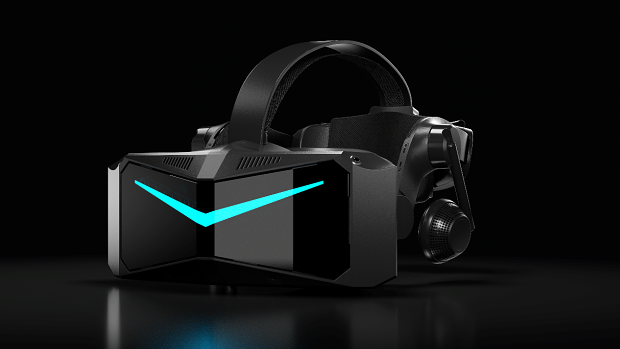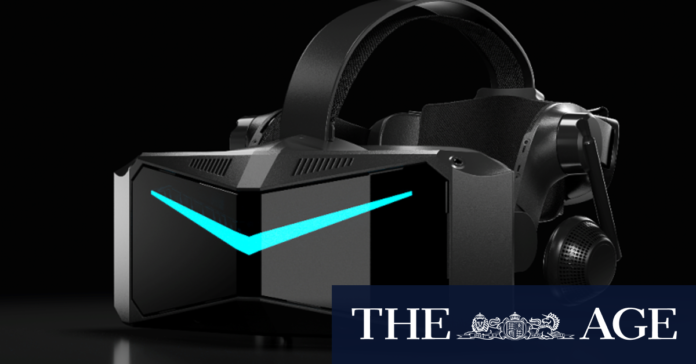[ad_1]
The Pimax Crystal is the epitome of high-end consumer VR, with the Chinese company’s unmatched panels and lenses providing the clearest and sharpest view into a virtual world I’ve ever seen. Tech-wise there’s not much this headset doesn’t do, from eye-tracking to automatic mechanical pupillary distance adjustments, but overloading on features does come at a cost; you’ll pay around $3000 for the setup, which is steep considering the Quest can plug into a PC for a similar (but much simpler) experience using a $100 cable, and other options like the $700 HTC VIVE Cosmos provide solid PC options.

The Pimax Crystal is big, with a huge field of view and no pesky blurring in your peripheral vision, but it comes at a cost.
Yet for folks who are into flight simulators or racing games and want a huge field of view and the fastest, best graphics possible, the Crystal will be at the top of the list. You do miss out on a bit of the refinement and ease-of-use — if you think of the Quest as like an iPhone, the Crystal is like an absurdly powerful Android — but it’s hard to argue with the experience once you’re inside. The Crystal does have a standalone mode so you can use it with no PC, but it currently has very few games available.
A console contender
This year Sony introduced the PlayStation VR2, and on paper it’s an incredibly capable device for the competitive price of $880. But despite its sharp high-resolution displays, eye tracking and great controllers, it comes with a number of caveats.
First, it only works with a PlayStation 5 console, so if you don’t already have one that’s an additional cost of $800. On its own that wouldn’t be so bad, given comparable PC VR systems also require an expensive computer to function. But while the PC has hundreds of good VR games available in established ecosystems, the lineup for PS VR2 is quite thin. The bulk of games are also available on Quest, major games from PC are missing, and Sony’s own studios have only produced one full VR game for the system: Horizon Call of the Mountain, a $110 climbing and archery adventure.
Loading
For existing PS5 users with faith in the future of the platform, it’s a great tethered VR unit. But those with a powerful PC or interest in wire-free VR might think twice.
Apple’s waiting in the wings
Coming to the US next year and the rest of the world at some point later, Apple’s Vision Pro headset is shaping up to be like a supercharged Quest 3 with several Apple-specific touches. Internal cameras can project a view of your face on the outside of the headset, so people in real life can see your eyes, while Apple’s existing ecosystem of phone, tablet and computer software will work as floating windows within mixed reality.
If you already use Apple products this might sound like the perfect way to enter the world of VR, but at around $5300 it also costs more than seven times what the Meta Quest 3 does.
Eventually it seems like the Vision Pro could stand in for something like a Mac, so that price might not be too outrageous. But that assumes one can use it for hours at a time without fatigue, a feat that would be a first for any headset.
Get news and reviews on technology, gadgets and gaming in our Technology newsletter every Friday. Sign up here.
[ad_2]
Source link


